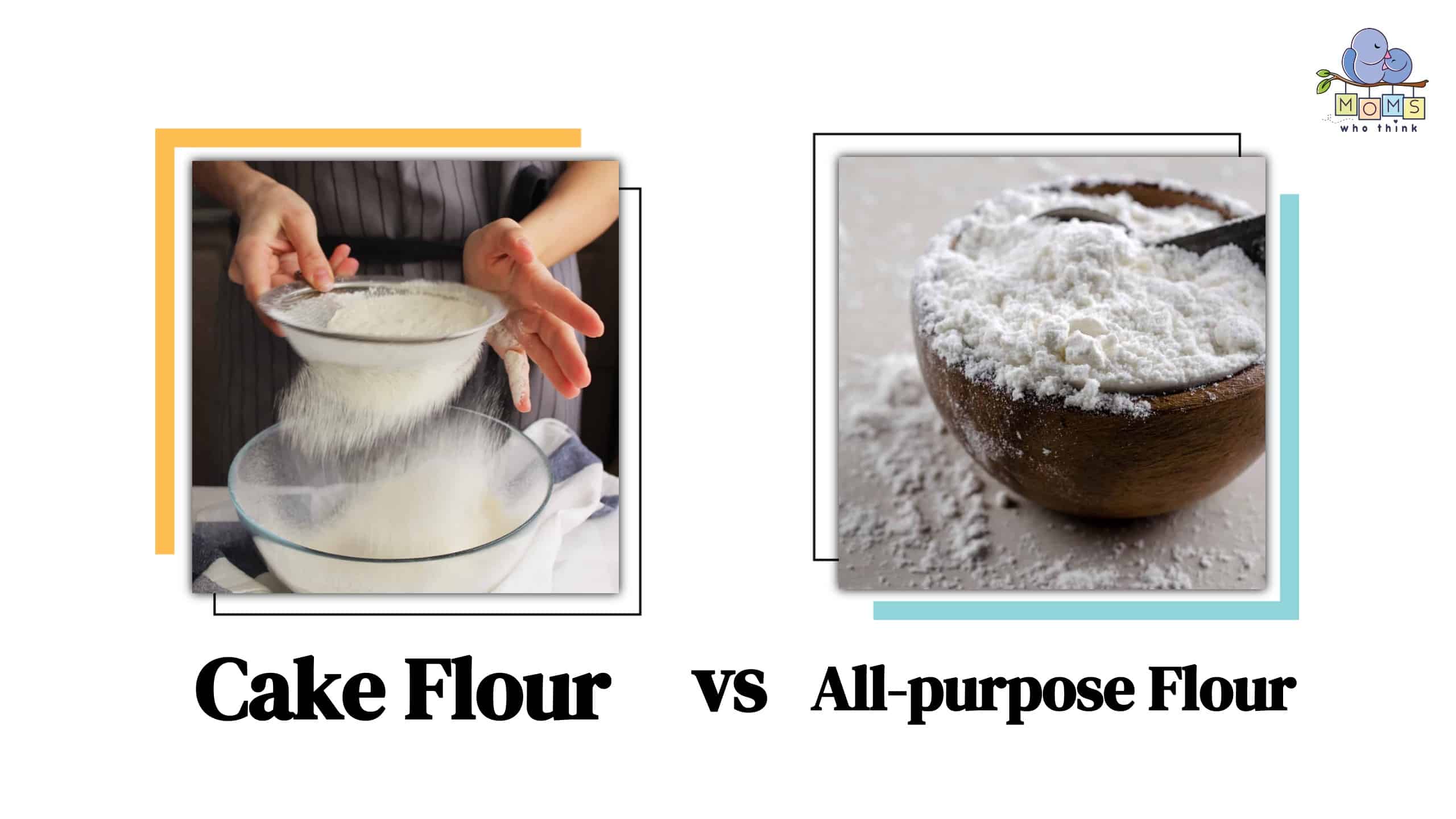If you've ever baked, you know that baking can be a tedious task. Every ingredient and every step should happen just as the recipe calls for, otherwise you might end up with a baking disaster. Today we're looking at the differences between cake flour vs. all-purpose flour, the main difference being that cake flour has a lower protein content than all-purpose flour.
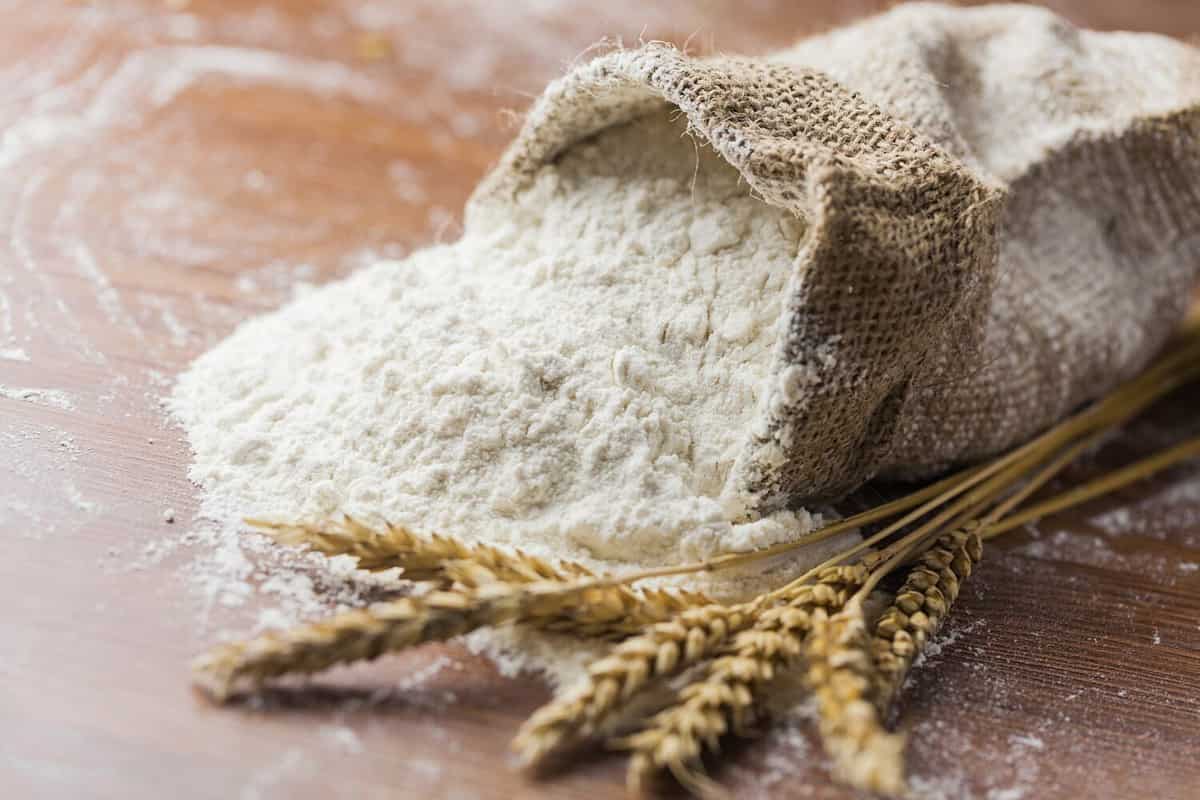
There are 13 types of flour that all have a unique and specific purpose; all-purpose, bread, semolina, whole wheat, white whole wheat, cake, pastry, 00, self-rising, strong, high-protein, rye, and barley flour.
©Billion Photos/Shutterstock.com
Cake Flour vs. All-Purpose Flour: Protein Content
Cake flour is made and milled to have a fine consistency. It has a lower protein content of about 7-9% protein which in turn means that it has less gluten. All-purpose flour has about 10-12% of protein content. So, with lower protein content, cake flour is going to produce less gluten than all-purpose flour which will create more gluten. When there's less gluten, your baked good will become softer and have a fluffier texture. When there's more gluten, your baked good will be denser and heavier.
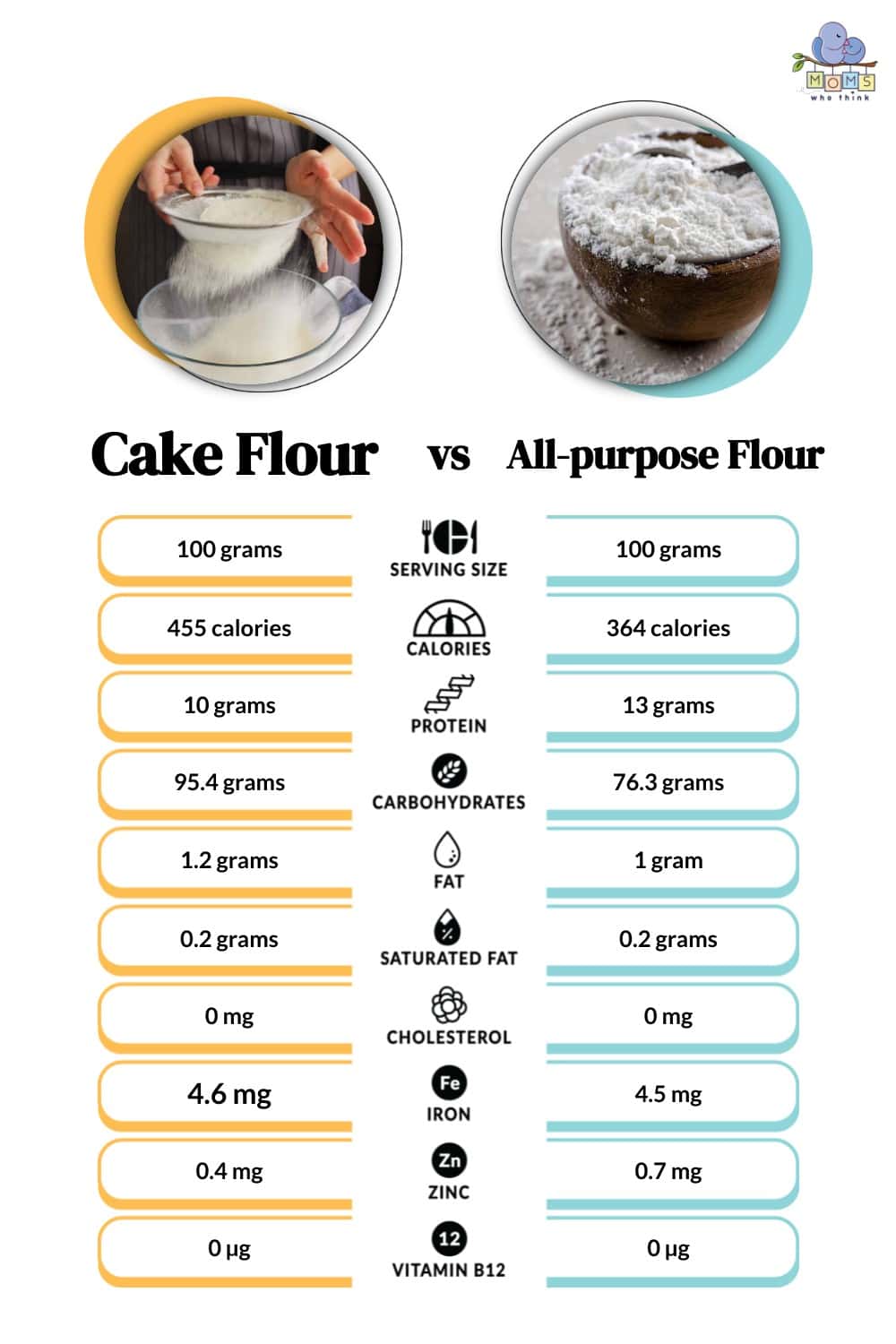
Cake Flour vs. All-Purpose Flour: How It's Made
Cake flour is made by taking soft wheat and milling/sifting it until it is extra fine. All-purpose flour is made with hard red wheat or a blend of hard and soft wheat. The bran and germ are removed so the wheat loses many of its vitamins and minerals.
Cake Flour vs. All-Purpose Flour: When It Was First Used
All-purpose flour has been around for many years. Around 3,000 B.C., in Egypt, they start using hand sieves to separate the coarse part of the grain from the finer part of the grain. Because this was a very time-consuming ordeal, typically only royalty could pay for this kind of flour.
Cake flour on the other hand become more prevalent in the late 1800s. In 1894, cake flour was invented by Addison Igleheart, the creator of Swans Down Cake Flour. Once it was released to the market, it became extremely popular. 10 years later it won a prize at the World's Fair in St. Louis
Cake Flour vs. All-Purpose Flour: How To Use It
Because each baked good requires a different texture, it's important to make sure you're using the correct flour. If you're making something like bread or cookies, use flour with higher protein for a chewier texture. When making something like a cake, you want a soft and fluffy texture so it's best to use a cake flour that has less protein content.
Even with that being said, using cake flour for baking cakes isn't always the right move! There are some cakes that do better with cake flour and others that do better with all-purpose flour. For example, it is not a good choice to use cake flour when making chocolate cake. The recipe for chocolate cake calls for cocoa power which is a very fine powder. Using the cocoa powder and the fine cake flour together will make your chocolate cake flimsy. Cake flour is great when making cakes like vanilla cake, upside-down cake, red velvet cake, or funfetti cake.
Cake Flour vs. All-Purpose Flour: Additives
There are additives in flour that are bleached whether it's cake flour or all-purpose flour. Using chlorine gas to bleach flour, there is usually chlorine that is retained in the flour. If the flour is unbleached, there are usually no artificial additives.
Although not considered additives, there are enrichments in flour. This includes vitamins like Vitamin B, folic acid, and iron. Flours are enriched with vitamins because most nutritional value is lost from the wheat when the bran and germ are removed.
Cake Flour vs. All-Purpose Flour: Taste
Because the difference between these two flours is all about texture, you won't notice a difference in taste. Even though they may use a different wheat, the end result ends in the same flavor. Flour typically doesn't have much of a taste or flavor, which is what you want when you are baking.
Cake Flour vs. All-Purpose Flour: DIY Cake Flour
So, what do you do when your recipe calls for cake flour but you only have all-purpose flour? You can create cake flour if you have all-purpose flour and cornstarch on hand. Cake flour can be made by sifting together a small amount of cornstarch with all-purpose flour. Although this can be a great option if you need it in a pinch, when making baked goods that are delicate like a white cake or angel food cake, it is best to just go to the store and purchase cake flour so you can ensure it turns out right.
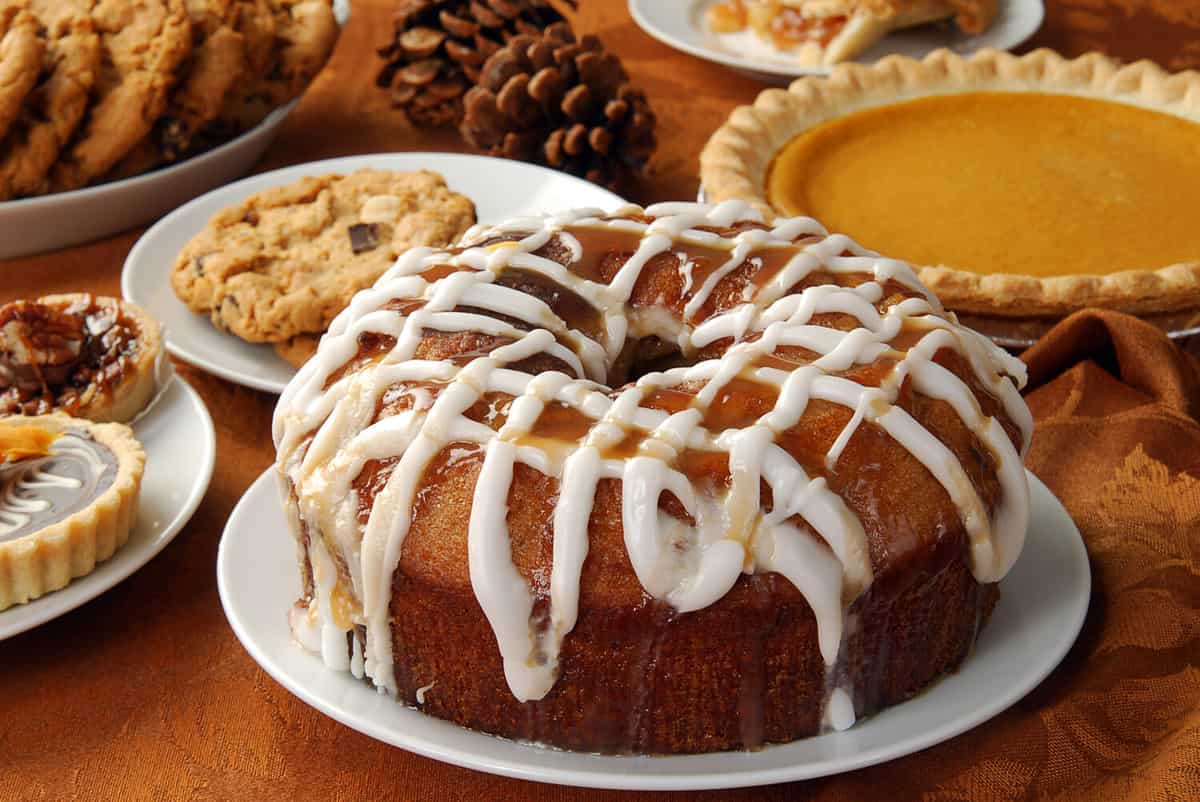
Flour is the most essential ingredient when it comes to baking.
©MSPhotographic/Shutterstock.com
A Quick Comparison of Cake Flour vs. All-Purpose Flour
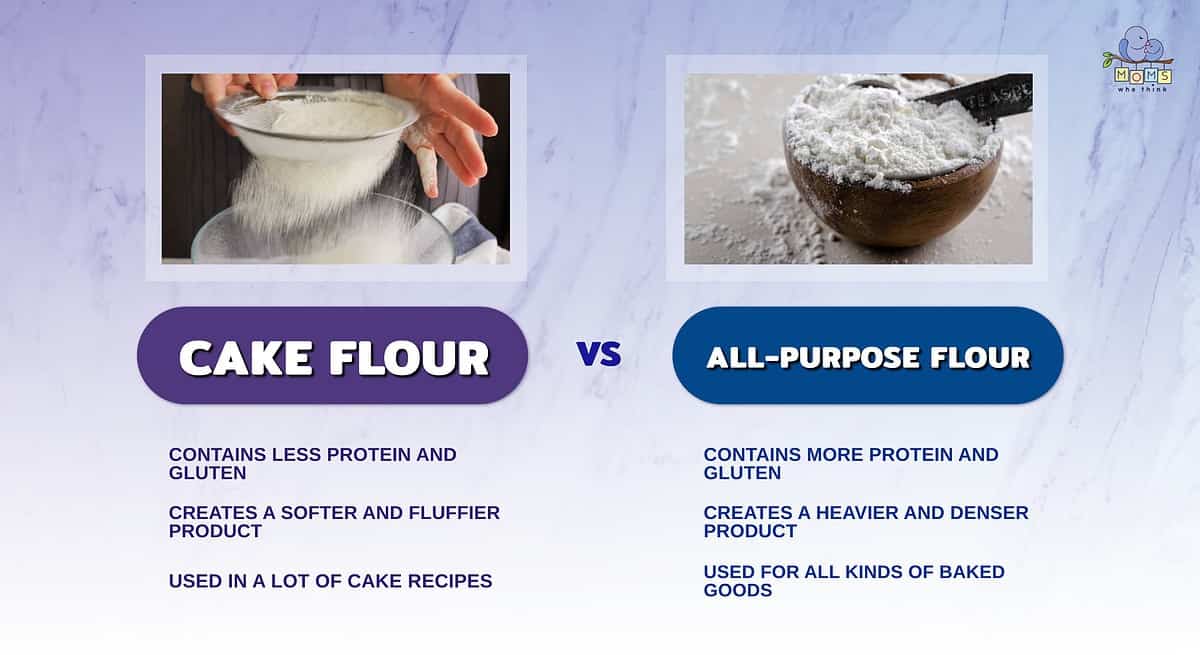
Cake flour contains less protein than all-purpose flour, which means that the gluten content will be lower. A lower gluten content means that cake flour will produce an end product that's soft and fluffy. All-purpose flour's higher gluten content will give you a heavy and dense product. Interestingly, you can't use cake flour in every cake recipe. For example, using cake flour in a chocolate cake usually isn't recommended. Meanwhile, all-purpose flour can be used in virtually every baked good.
Cake Flour vs. All-Purpose Flour: Recipes
Whichever flour you have on hand, here are some recipes broken down by which flour you should use to make it.
Cake Flour
All-Purpose Flour
Print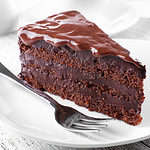
Midnight Velvet Deep Chocolate Cake with All-Purpose Flour
Ingredients
2 cups sugar
1 3/4 cups all-purpose flour
3/4 cup Hershey’s Cocoa or Hershey’s Premium European-Style Cocoa
1 1/2 teaspoons baking powder
1 1/2 teaspoons baking soda
1 teaspoon salt
2 eggs
1 cup milk
1/2 cup vegetable oil
2 teaspoons vanilla extract
1 cup boiling water
Instructions
1. Preheat oven to 350 degrees F. Grease and flour two 9 inch round pans or one 13x9x2-inch baking pan.
2. Stir together sugar, flour, cocoa, baking powder, baking soda and salt in large bowl.
3. Add eggs, milk, oil and vanilla; beat on medium speed of electric mixer 2 minutes.
4. Stir in boiling water (batter will be thin). Pour batter into prepared pans.
5. Bake 30 to 35 minutes for round pans, 35 to 40 minutes for rectangular pan or until wooden pick inserted in center comes out clean.
6. Cool 10 minutes; remove from pans to wire racks. Cool completely. Frost with your favorite chocolate frosting.
